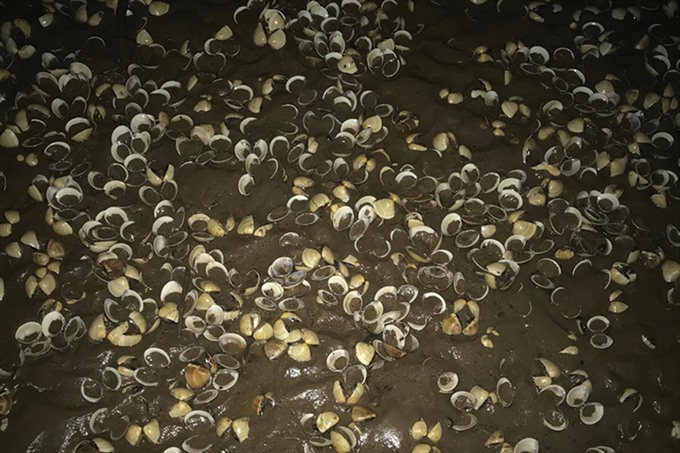 Society
Society

More than 300ha of oyster farms producing some 500 tonnes of oysters have died in Long Hòa commune, Châu Thành district in southern Trà Vinh province.
 |
| Oysters die en mass in the Tiến Thành Oyster Cooperative. — Photo laodong.vn |
TRÀ VINH — More than 300ha of oyster farms producing some 500 tonnes of oysters have died in Long Hòa commune, Châu Thành district in southern Trà Vinh province.
Phạm Văn Trường, director of the Tiến Thành Oyster Cooperative, said 200ha of the cooperative’s ponds cultivating oysters had died.
Normally, with an investment of VNĐ5 billion (US$222,200), the cooperative can harvest 500 tonnes of oysters and earn VNĐ10 billion ($444,400).
“This year we do not have any profits,” Trường said.
The cooperative has 318 members, and more than 50 per cent of them are poor households.
Huỳnh Văn Hoàn, head of the Hai Thủ Oyster Cooperative, said the cooperative had hoped to harvest 250 tonnes of oysters. However, it harvested only some 100 tonnes, incurring losses of more than VNĐ3.3 billion ($146,600).
Forty poor households of the cooperative will not earn any profits this oyster season.
Reason
According to Nguyễn Văn Nguyên, deputy secretary of the Party of Hai Thủ Village, many households in the area in recent years have been raising shrimps without any waste water treatment system in place. They discharge the waste water into the sea, which may have led to the death of oysters.
“The waste water had dark blue colour and bad smell,” Nguyên said.
More than 300 households in the village cultivate shrimps.
Trường said tests revealed the presence of bacteria in ponds cultivating shrimps, which he believed was the main cause of oysters’ death.
Nguyễn Thanh Thưởng, deputy chairman of the Long Hòa commune People’s Committee, said the commune had 1,600ha of ponds cultivating aquatic products, of which 320ha were used for shrimp cultivation.
More than 50 per cent of the area did not have any waste water treatment system.
“This is reason enough to claim that untreated waste water is the cause of oysters’ death,” Thưởng said.
However, Huỳnh Quốc Vũ, chairman of the Long Hòa commune People’s Committee, said the committee was yet to arrive at a conclusion. Meanwhile, it is educating local farmers about the treatment of waste water from shrimp cultivation. — VNS




